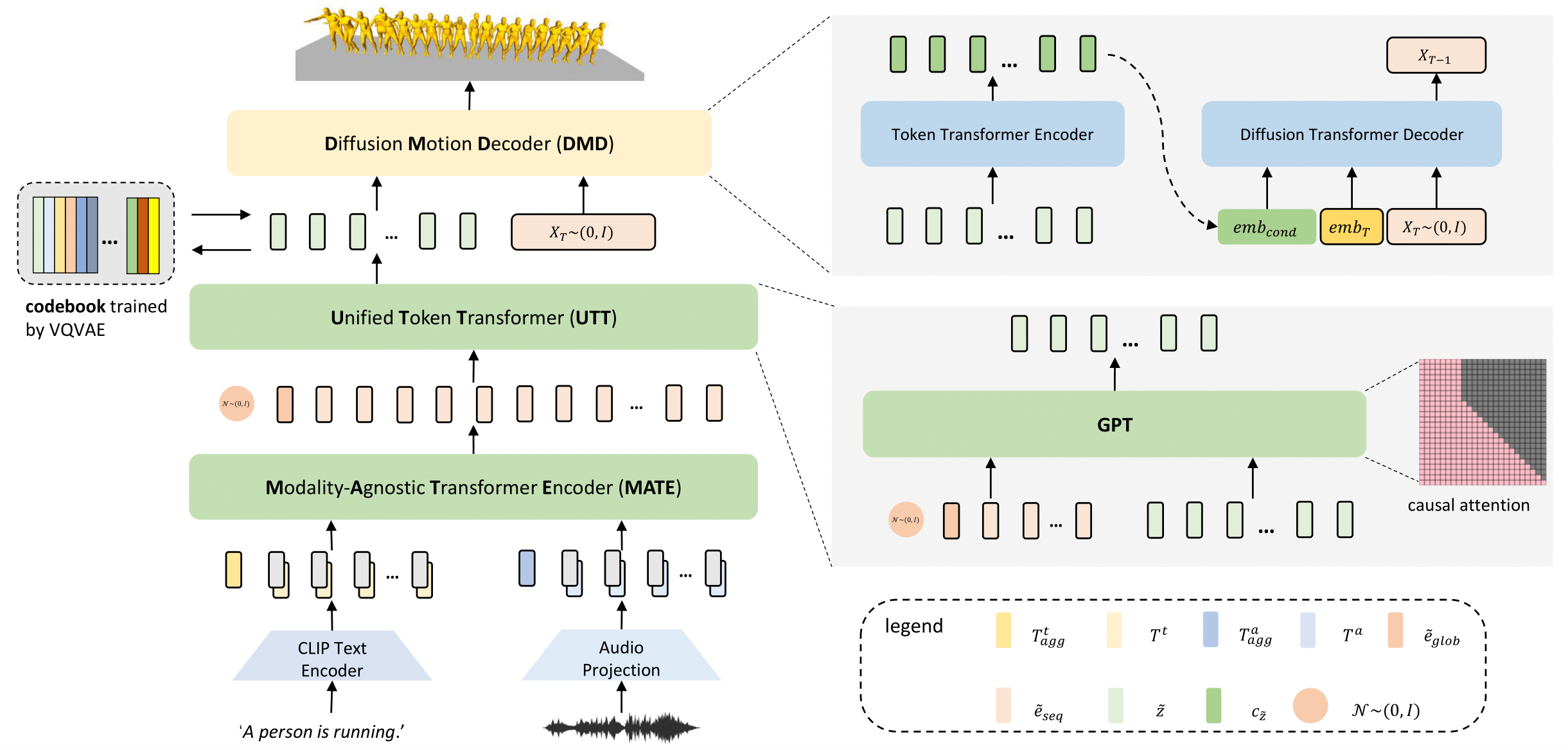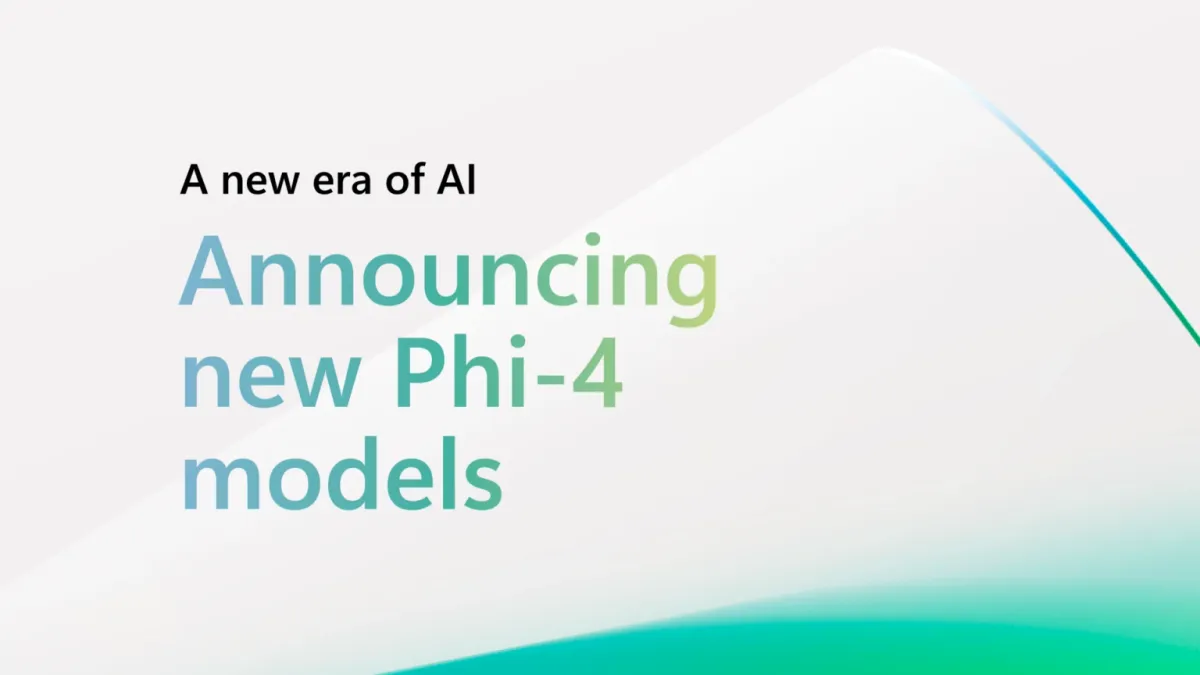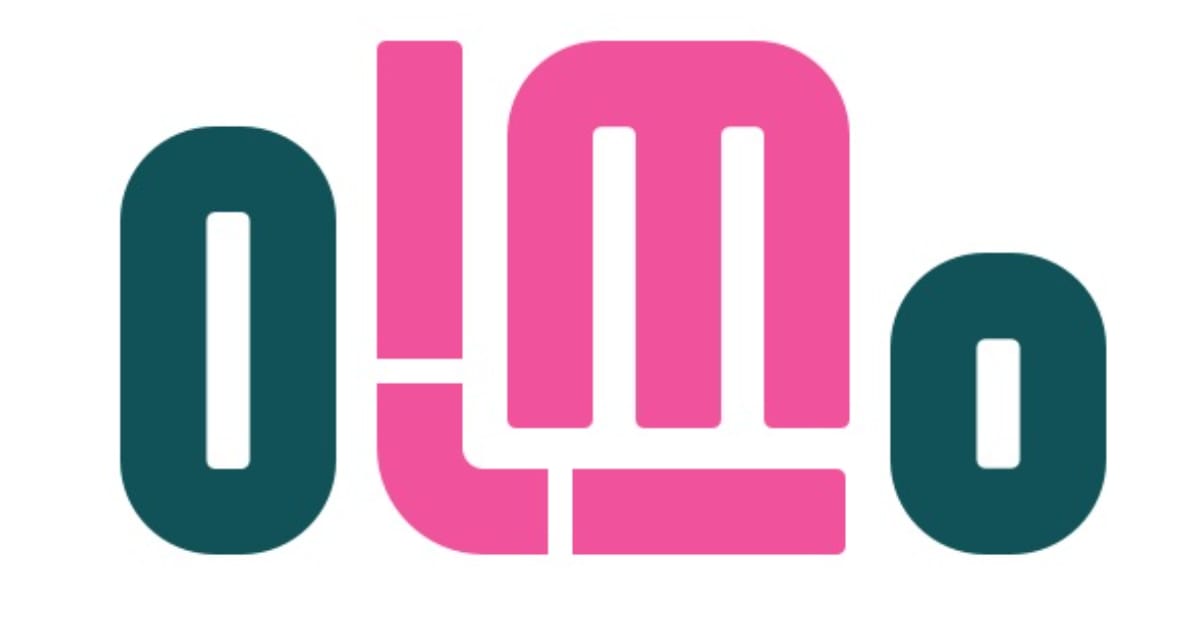Abstract
Generating controllable and editable human motion sequences is a key challenge in 3D Avatar generation. It has been labor-intensive to generate and animate human motion for a long time until learning-based approaches have been developed and applied recently. However, these approaches are still task-specific or modality-specific. In this paper, we propose “UDE”, the first unified driving engine that enables generating human motion sequences from natural language or audio sequences. Specifically, UDE consists of the following key components: 1) a motion quantization module based on VQVAE that represents continuous motion sequence as discrete latent code, 2) a modality-agnostic transformer encoder that learns to map modality-aware driving signals to a joint space, and 3) a unified token transformer (GPT-like) network to predict the quantized latent code index in an auto-regressive manner. 4) a diffusion motion decoder that takes as input the motion tokens and decodes them into motion sequences with high diversity. We evaluate our method on HumanML3D and AIST++ benchmarks, and the experiment results demonstrate our method achieves state-of-the-art performance
Video
Overview

The overview of our method. Our model consists of four key components. First, we train a codebook using VQ-VAE. For the codebook, each code represents a certain pattern of the motion sequence. Second, we introduce a ModalityAgnostic Transformer Encoder (MATE). It takes the input of different modalities and transforms them into sequential embedding in one joint space. The third component is a Unified Token Transformer (UTT). We feed it with sequential embedding obtained by MATE and predict the motion token sequences in an auto-regressive manner. The fourth component is a Diffusion Motion Decoder (DMD). Unlike recent works, which are modality-specific, our DMD is modality-agnostic. Given the motion token sequences, DMD encodes them to semantic-rich embedding and then decodes them to motion sequences in continuous space by the reversed diffusion process.






Comments